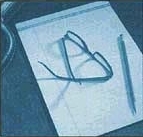Mid-Atlantic Health Law TOPICS

Maryland Regulatory News - Spring 2010

1. According to the Maryland Insurance Administration in 2008, almost 91% of the premium volume for health care coverage in Maryland was attributed to six payors. The premium volume was: CareFirst at 47.84% ($2,295,442,495), United HealthCare at 20.20% ($969,270,314), Kaiser at 9.82% ($471,075,540), Aetna at 5.12% ($245,573,424), Coventry at 4.32% ($207,382,934) and Cigna at 3.30% ($158,177,405). The remaining 40 payors' share of the premium volume was about 1% or less.
2. In the fall of 2009, the Maryland Health Quality and Cost Council, created by the Governor in 2007, as a part of the Department of Health and Mental Hygiene, approved the development of a Patient Center Medical Home (PCMH) all payor pilot for Marylanders. PCMHs are not buildings; PCMHs are a different way to practice medicine. They provide coordinated, comprehensive and continuous care directed by a physician-led team of health care professionals. Care is patient-centered and includes preventive services, treatment of acute/chronic illnesses and assistance with end of life issues. Several states including Pennsylvania have PCMHs up and running. The Maryland pilot hopes to enroll 50 medical, practices - at least 200 physicians- starting July 2010, and will cover about 200,000 people with different insurance coverage. The pilot is scheduled to span 3 years, and may begin as early as January 1, 2011. For more information on the pilot program and additional links about PCMHs, go to http://http://dhmh.maryland.gov/mhqcc/Documents/FINAL_PCMH_brochure.pdf
3. In January, the Maryland Health Care Commission (HCC) reported on the experience of the Shady Grove Adventist Emergency Center located in Germantown, nine miles from Shady Grove Adventist Hospital. The Center is licensed as a free standing medical facility and was created as a pilot project by the 2005 General Assembly. This facility is exempt from certificate of need, and must provide services 24/7 in a location physically separate from its affiliated hospital. The Center must accept all patients regardless of their ability to pay. In 2008 and 2009, the Center served about 31,000 and 33,000 patients, respectively. In 2009, about 1,000 patients arrived by ambulance and 42% of patients registered for care between 8 a.m. and 4 p.m. A second facility similar to the Center was approved by the 2007 General Assembly, and it is scheduled to open 21 miles from Memorial Hospital at Easton in late 2010. The HCC must report back to the General Assembly with its recommendations on the free standing medical facilities' niche in the State's health care delivery system.